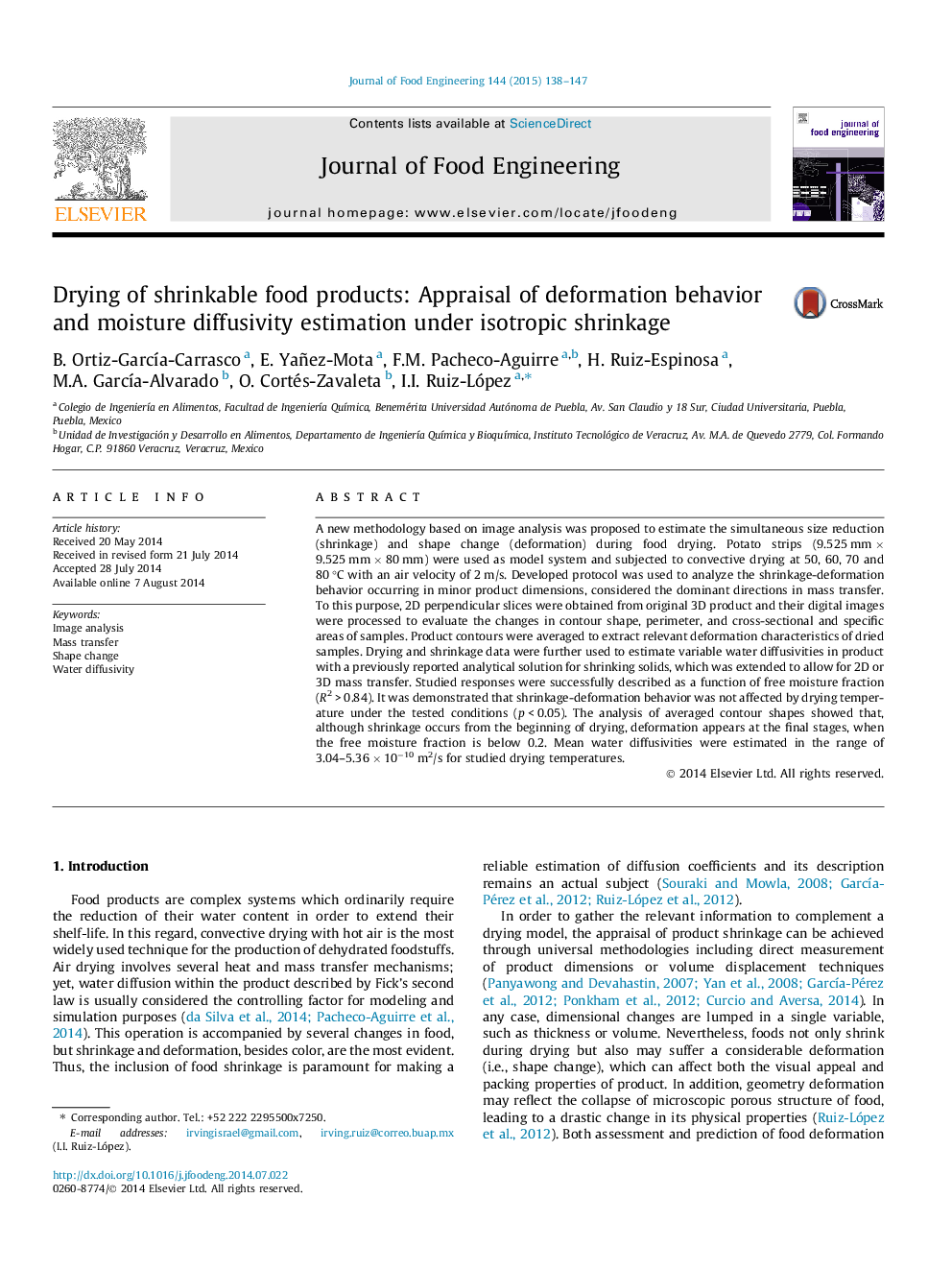| Article ID | Journal | Published Year | Pages | File Type |
|---|---|---|---|---|
| 223015 | Journal of Food Engineering | 2015 | 10 Pages |
•Simultaneous shrinkage and deformation (SD) during food drying is investigated.•SD are analyzed in the dominant mass transfer directions from digital images.•Potato strips were used as model system and dried at 50, 60, 70 and 80 °C .•Contour shape, perimeter, surface area and specific area were estimated.•SD described as a moisture function were not affected by temperature.
A new methodology based on image analysis was proposed to estimate the simultaneous size reduction (shrinkage) and shape change (deformation) during food drying. Potato strips (9.525 mm × 9.525 mm × 80 mm) were used as model system and subjected to convective drying at 50, 60, 70 and 80 °C with an air velocity of 2 m/s. Developed protocol was used to analyze the shrinkage-deformation behavior occurring in minor product dimensions, considered the dominant directions in mass transfer. To this purpose, 2D perpendicular slices were obtained from original 3D product and their digital images were processed to evaluate the changes in contour shape, perimeter, and cross-sectional and specific areas of samples. Product contours were averaged to extract relevant deformation characteristics of dried samples. Drying and shrinkage data were further used to estimate variable water diffusivities in product with a previously reported analytical solution for shrinking solids, which was extended to allow for 2D or 3D mass transfer. Studied responses were successfully described as a function of free moisture fraction (R2 > 0.84). It was demonstrated that shrinkage-deformation behavior was not affected by drying temperature under the tested conditions (p < 0.05). The analysis of averaged contour shapes showed that, although shrinkage occurs from the beginning of drying, deformation appears at the final stages, when the free moisture fraction is below 0.2. Mean water diffusivities were estimated in the range of 3.04–5.36 × 10−10 m2/s for studied drying temperatures.
